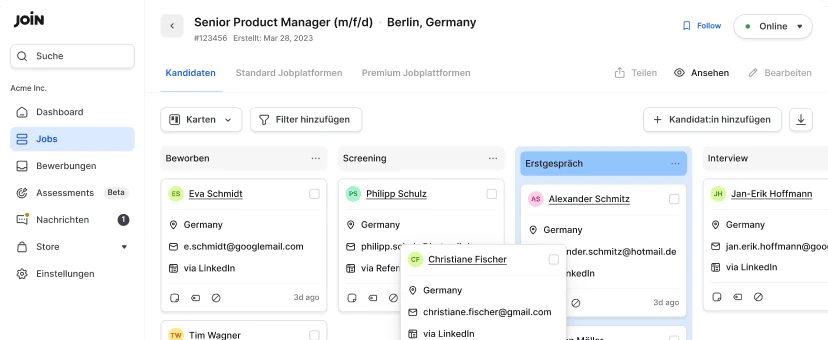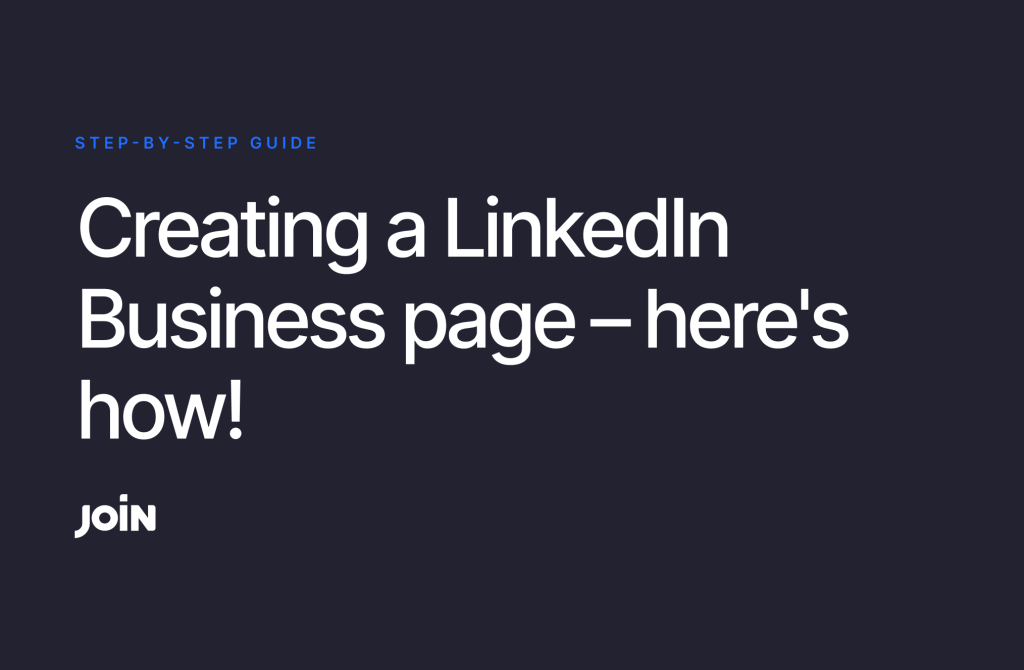The full life cycle recruiting process: Is it right for your business?
In talent acquisition, organisations strive to find the best candidates who possess the required skills and align with their company culture. This is where full life cycle recruiting comes into play.
Table of contents
Full life cycle recruiting, also known as full cycle recruiting or end-to-end recruiting, is a holistic approach to the recruitment process. It involves a recruiter’s involvement in every step, from the initial job opening to the new hire’s onboarding.
Find out below if this is the right solution for your business. Here’s what you’ll learn:
- What is full life cycle recruiting?
- The 6 steps of the full cycle recruiting process
- Pros and cons of full life cycle recruiting
- Tools for full life cycle recruiting
- Perfecting the recruitment life cycle
What is full life cycle recruiting?
Full cycle recruiting encompasses a complete recruiting process from start to finish, owned/overseen by the same person. It ensures the recruiter is involved in each stage, providing a seamless and efficient recruitment process.
This approach allows for a more personalised and engaging candidate experience and increased accountability for the recruiter and hiring managers.
The 6 steps of the full-cycle recruiting process
The full-cycle recruiting process consists of six main stages: Preparing, sourcing, screening, selecting, hiring, and onboarding. Each stage plays a crucial role in finding and securing the right talent for an organisation.
Step 1: Preparing
The first stage of the full life cycle recruiting process is preparing. This stage involves gathering information from the hiring manager to understand the position’s requirements. The recruiter conducts a vacancy intake with the hiring manager to discuss the specific skills, personality traits, and capabilities necessary for the role.
Based on this information, the recruiter develops a clear and inclusive job description that accurately represents the position and its requirements. A well-written job description attracts qualified candidates and sets clear expectations for the role.
Step 2: Sourcing
Once the job description is finalised, the candidate sourcing process begins.
Sourcing refers to the process of finding and attracting potential candidates for the position. Various methods of sourcing candidates include posting job openings on job boards, using social media platforms, and leveraging employee referral programs.
Through active sourcing (also called passive candidate sourcing), recruiters can build a vast talent pool of both active and passive candidates.
Step 3: Screening
After sourcing potential candidates, the screening stage begins. This stage involves reviewing resumes, cover letters, and applications to identify candidates who meet the qualifications outlined in the job description. The screening goal is to narrow the pool of applicants to a manageable number for further evaluation.
Resume screening is a common technique used during this stage. Recruiters use various tools, such as applicant tracking systems, to automate the screening process and identify qualified candidates efficiently.
Phone screenings or chatbot interactions may also be conducted to assess candidates’ compatibility with the role further.
Step 4: Selecting
In the selecting stage, the recruiter and hiring manager evaluate candidates to determine the best fit for the position. This stage mostly consists of the interview process and often involves conducting in-person and virtual interviews to assess candidates’ skills, experience, and cultural fit.
During the selection stage, it is important for the recruiter to maintain a strong relationship with the hiring manager. Regular communication and feedback exchange between the recruiter and hiring manager ensure alignment and collaboration throughout the selection process.
Interview scorecards can help maintain a structured and consistent approach to candidate evaluation. These scorecards provide a framework for asking relevant questions and assessing candidates objectively, reducing the risk of bias in the selection process.
Step 5: Hiring
Once the selection stage is complete, the hiring stage begins. This stage involves extending a job offer to the selected candidate to finish the hiring process.
The recruiter notifies the candidate of their selection and presents them with a formal job offer letter. The letter outlines the terms of employment, including compensation, benefits, start date, and other relevant details.
Negotiations may be necessary during this stage, as candidates may request adjustments to the offer. The recruiter and hiring manager work together to address any concerns and reach a mutually satisfactory agreement.
Step 6: Onboarding
The final stage of the full life cycle recruitment process is onboarding. Onboarding is the process of integrating the newly hired employee into the organisation. It begins after the candidate accepts the job offer and continues through their first days, weeks, and months in the company.
During the onboarding stage, the recruiter, hiring manager, and HR team collaborate to provide the necessary information, training, and support for the new employee.
This includes sharing company policies and procedures, introducing them to their team members, and providing any necessary resources or tools to ensure a smooth transition into their new role.
Pros and cons of full life cycle recruiting
Full cycle recruiting offers several benefits for both candidates and organisations. Let’s explore some pros and cons of this approach.
Pros of full-cycle recruiting
- Clear ownership and accountability: With a single recruiter involved in every process stage, there is a clear sense of accountability. This ensures that the recruiter takes ownership of the entire recruitment process and can be held responsible for its success.
- Smoother candidate experience: Full life cycle recruiting provides a more personalised and engaging candidate experience. Candidates have a single point of contact throughout the process, which reduces confusion and creates an effective recruitment communication strategy. This, in turn, creates a more positive and stress-free experience for candidates.
- Decreased time to hire: By having one person responsible for the entire process, unnecessary delays and bottlenecks can be minimised. This results in a faster time to hire, which benefits both candidates and organisations.
Cons of full-cycle recruiting
- Unsuitable for certain organisations: Full cycle recruiting may not be suitable for all types of organisations. When one person is responsible for every stage of the process, their capacity to handle a large number of candidates may be limited. This approach best suits highly specialised roles or smaller organisations with fewer recruitment needs.
- Demand for diverse skill set: Full life cycle recruiters require a diverse skill set to handle all stages of the recruitment process. They must be proficient in sourcing, screening, interviewing, negotiation, and onboarding. This demand for a wide range of skills can be challenging for some recruiters.
Tools for full-cycle recruiting
Several tools and technologies can support the full life cycle recruiting process. These tools aim to streamline and automate various stages of the recruitment process, making it more efficient and effective.
- Applicant Tracking Systems (ATS): ATS platforms help recruiters manage the entire recruitment process, from (free) job posting to candidate selection. These systems automate tasks such as resume screening, interview scheduling, and applicant communication, allowing recruiters to focus on higher-value activities.
- Sourcing tools: Sourcing tools enable recruiters to find and attract potential candidates from various sources, including job boards, social media platforms, and professional networks. These tools often use artificial intelligence and machine learning algorithms to identify relevant candidates based on specific criteria.
- Interview and assessment tools: Interview and assessment tools assist recruiters in conducting structured interviews and evaluating candidates objectively. These tools may include features such as video interviewing, skills assessments, and personality tests.
- Onboarding software: Onboarding software helps streamline the onboarding process by providing a centralised platform for new employees to access essential information, complete necessary paperwork, and connect with their team members.
It is important for recruiters to stay up-to-date with the latest technology trends in recruitment and select the tools that best fit their organisation’s needs and goals.
Say you work at an SMB, then your budget is probably limited. In this case, you probably want to choose specific small business recruiting software that’s tailored to the needs of a small business (like JOIN’s free recruiting software!).
Is your budget a bit bigger? Then you might want to complement your recruitment software solution with a more dedicated HR software system that includes additional features (like payroll) beyond the recruitment process.

Perfecting the recruitment life cycle
Full-cycle recruiting is a comprehensive and strategic approach to talent acquisition. Organisations can ensure a more personalised candidate experience, increased accountability, and a faster time to hire by involving a recruiter in every stage of the recruitment process.
While full-cycle recruiting may not be suitable for every organisation, it offers several benefits that can greatly enhance the recruitment process.
To effectively implement full life cycle recruiting, recruiters can leverage various tools and technologies that automate and streamline different stages of the process. These tools help recruiters find and attract qualified candidates, assess their skills and fit, and facilitate a seamless onboarding experience.
Organisations can attract and retain top talent by adopting a full life cycle recruiting approach and using the right tools, ultimately driving their success and growth in a competitive job market.
Need more help improving your recruitment and HR processes? Then also check out these resources:
Frans Lelivelt
Frans is JOIN's multilingual Senior Content Manager. His main topic of interest in the recruitment space is DEI and how companies can reduce their (unconscious) biases to make the world of work a fairer, kinder place for everyone. Outside of work, he tries to do the same for animals, spending much of his spare time in the kitchen preparing plant-based feasts.




